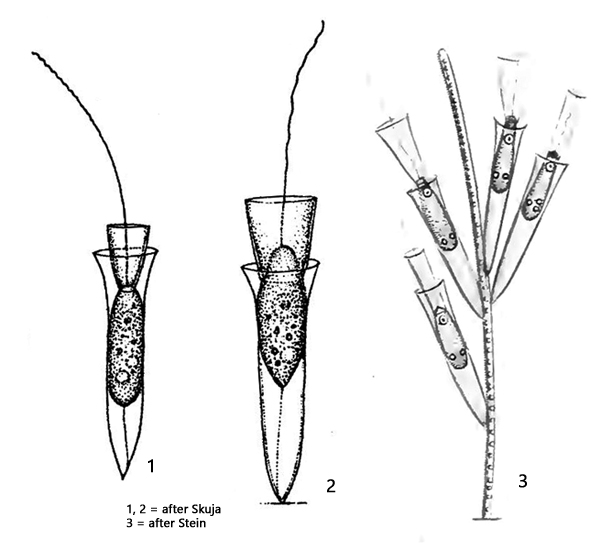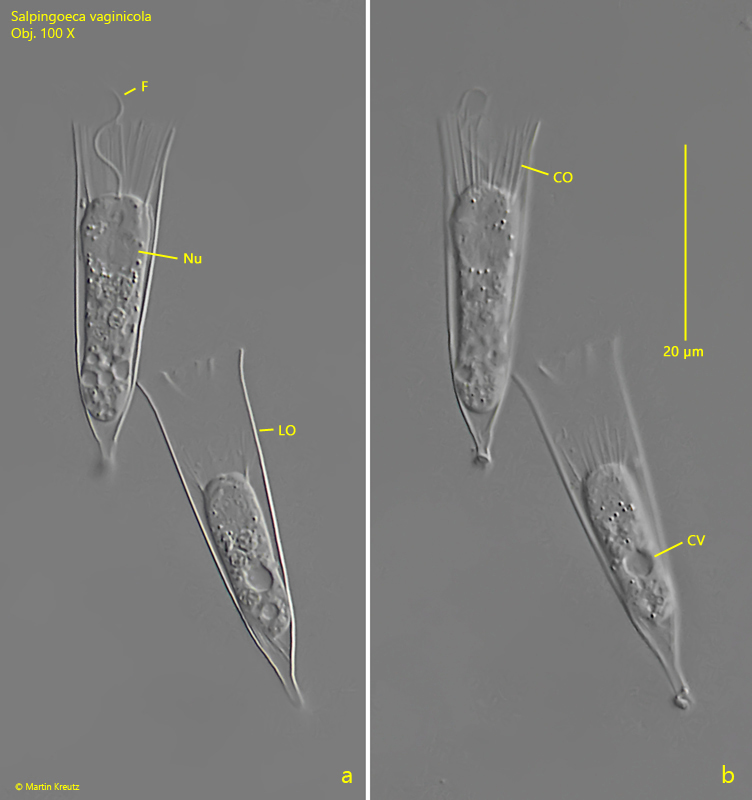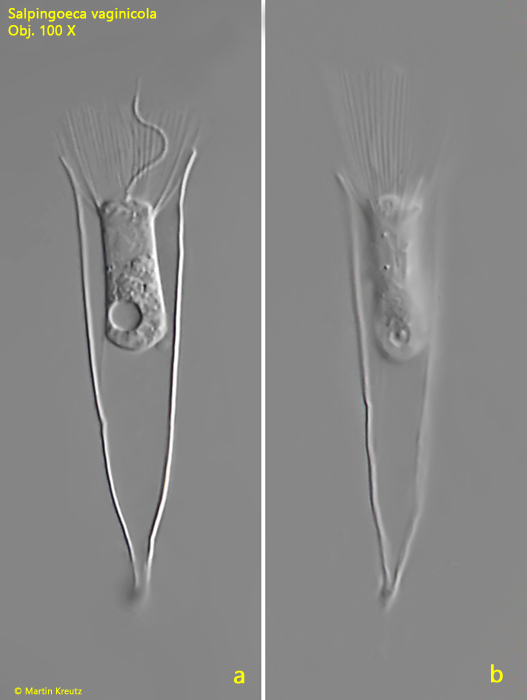Salpingoeca vaginicola (F. Stein, 1878)
Most likely ID: n.a.
Synonym: n.a.
Sampling location: Simmelried
Phylogenetic tree: Salpingoeca vaginicola
Diagnosis:
- lorica slender vase- to trumpet-shaped, in the middle with parallel sides
- opening of lorica widened, narrowed to posterior end
- length 32–35 µm (of lorica)
- cell occupies upper half of lorica
- one flagellum, 30–35 µm long
- base of flagellum surounded by circular collar of microvilli, 10–15 µm high
- one nucleus in anterior third with spherical nucleolus
- 1–3 contractile vacuoles in posterior third

I have found Salpingoeca vaginicola only once in March 2020, settled on a floating coverslip. However, I may have overlooked the species in fresh specimens. Skuja (1948) also found Salpingoeca vaginicola only rarely, colonized on the cyanobacterium Coelosphaerium.
The lorica of Salpingoeca vaginicola is slender vase-shaped with a slightly widened opening and a pointed posterior end, which is sometimes extended into a short, hollow stalk. With a length of about 35 µm, the lorica is very large. In my population there were also loricae present with a length of 38 µm. The nucleus with a spherical nucleolus is located in the anterior third. According to Skuja, Salpingoeca vaginicola has 1-3 contractile vacuoles in the posterior third. In my specimens there was always one contractile vacuole visible, but it was surrounded by many auxiliary vacuoles. The height of the collar in my specimens was 8.6–11.5 µm, which is somewhat lower than indicated by Skuja. The flagellum of my specimens was also shorter (15–16 µm) than determined by Skuja (30–35 µm).

Fig. 1 a-b: Salpingoeca vaginicola. L = 36–37 µm (of loricae). Two focal planes of two slightly squashes specimens. CO = collar composed of microvilli, CV = contractile vacuole, LO = lorica, Nu = nucleus. Obj. 100 X.

Fig. 2 a-b: Salpingoeca vaginicola. L = 38 µm (of lorica). Two focal planes of a young specimen with a small protoplast. Obj. 100 X.